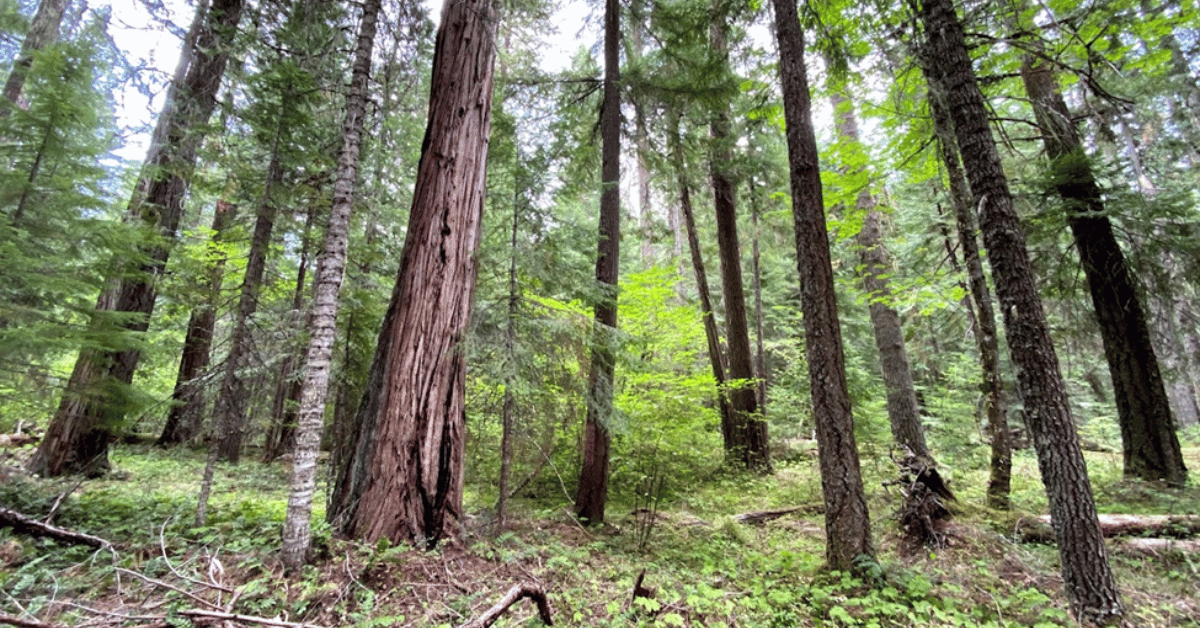
Oregon Wild has elected to file an objection to the draft Record of Decision for the Youngs Rock Rigdon (YRR) Project on the Willamette National Forest because it will sacrifice more than 1,000 acres of mature and old-growth forest, including northern spotted owl suitable habitat and critical habitat; it will increase global warming by causing significant carbon emissions from logging; and it will replace mature forests that are relatively resilient to wildfire with low-density forests and shrub fields that are expensive to maintain and pose an increased fuel hazard. We hope our objection can help the Forest Service make a balanced and informed final decision on the project.
The Forest Service’s primary goal with this project is to restore dry Ponderosa pine/White oak savanna similar to the Jim’s Creek Project previously approved in the same area. That project resulted in a significant blowdown event killing several hundred old-growth pine trees that the project intended to save, as well as significantly spread weeds where native wildflowers were intended to thrive. The Jim’s Creek Project was 450 acres. The Youngs Rock Rigdon Project is five times larger.
The YRR Project is located in the upper Middle Fork Watershed above Hill Creek Reservoir. The area harbors a mix of moist and dry forests, including surviving remnants of a rare pine/oak savanna ecosystem that was likely maintained by frequent native burning. For more than 100 years, the Forest Service failed to allow the pattern of cultural burning that maintained these unique forests, so the forest quite predictably grew into relatively dense mature and old-growth stands that now provide important habitat for spotted owls and help to make the Willamette NF among the largest stores of carbon in the entire National Forest System. The Forest Service wants to bring back that pine/oak savanna, but they are taking a nugget of a good idea way too far.
The YRR Project is a large logging project that will commercially log 2,608 acres, including 1,419 acres of mature natural stands, and 531 acres of clearcutting in managed stands. Almost 1,000 acres will be logged with ground-based heavy equipment that can damage soils and spread weeds. Logging will occur in critical habitat for the Threatened northern spotted owl, as well as in riparian reserves, Special Interest Areas, and likely occupied but unsurveyed habitat for red tree voles. The YRR Project will produce 63 million board feet of logs, enough to fill 12,600 log trucks. Ten miles of new roads will be built, but the Forest Service does not disclose where they will be built. Logging and roads will affect ESA-listed species, including northern spotted owls, Chinook salmon, and bull trout. 2,799 acres of suitable spotted owl nesting, roosting, and foraging habitat would be removed (not maintained; not degraded; removed) by heavy logging to create savannas and clearcutting in managed stands. About half of the suitable habitat removal is within spotted owl critical habitat. The project also includes road maintenance, floodplain restoration, meadow restoration, recreation enhancements, and fuel reduction.
There are many aspects of this project that Oregon Wild supports, including floodplain restoration, meadow restoration, variable thinning of young plantations, recreation enhancements, road decommissioning, road storage, and some of the fuel reduction activities that focus on prescribed fire and removing small fuels near roads. Unfortunately, all this good work is overshadowed by unnecessarily aggressive logging of 1,400 acres of native forests, clearcutting of 500 acres of plantations, and 10 miles of new road construction.
Oregon Wild also supports the goal of restoring dry pine and oak sites, but we feel that this can be accomplished in more limited areas that clearly exhibit significant components of the historic pine/oak community. A modified approach that protects more of the existing mature and old-growth forests would serve several important purposes:
-
First, it will help mitigate global climate change by keeping much more carbon in the forest and out of the atmosphere.
-
Second, it will help spotted owls survive the current shortage of habitat caused by decades of unsustainable logging of old growth on the Willamette National Forest, and help spotted owls coexist with invading barred owls that currently occupy and defend much of the available suitable owl habitat.
-
Third, it will retain mature forests with thick bark, high canopies, and favorable microclimates that are shown to be more resistant and resilient to wildfire.
Conserving more mature and old-growth forest will advance the goals of President Biden’s April 2022 Executive Order calling for the protection of mature and old-growth forests to meet the twin goals of biodiversity conservation and climate change mitigation.
Oregon Wild’s objection reiterates comments and concerns raised earlier in the public process. It urges the Forest Service to explore options and find a better balance between pine/oak enhancement on the one hand, and old growth conservation, spotted owl recovery, wildfire resilience, and carbon storage on the other. These goals are somewhat in conflict, because pine/oak restoration requires reducing tree density, while conservation of old growth, spotted owls, and carbon requires retaining more trees. The Forest Service has chosen to aggressively emphasize one set of values while sacrificing the others. The Forest Service can and should do the right thing and harmonize high-priority restoration actions without unnecessarily sacrificing other important goals.
Oregon Wild has been raising these same concerns since at least 2006 when we commented on the Jim’s Creek Project: “The FS should attempt to objectively balance the benefits of natural savanna restoration and the adverse impacts of treatment, primarily loss of late seral habitat.”

